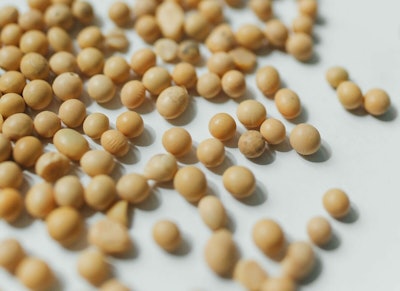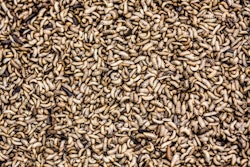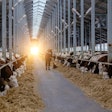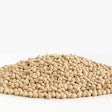
China is redoubling its efforts to reinforce food security by cutting the amount of soybeans used in animal feed.
China'sMinistry of Agriculture and Rural Affairs(MOA) said in a notice this week that the reduction is aimed at ensuring China's food security amiduncertain external suppliesand promoting high-quality development and efficiency of the industry.
The MOA identified feed grains as the most pressing problem for food supplies. It urged the feed sector to learn from some of the top producers that have successfully reduced the amount of soybean meal — derived from crushing soybeans — used in livestock rations as their main source of protein.
According to theGlobal Times, major Chinese hog farmers and feedstock producers are vowing to reduce the use of soybean meal in feed amid efforts to ensure national food security.
- Muyuan Foods Co, a leading hog and pork producer, said the company saved 1.3 million tons of soybean meal compared with the average level by using just 6.9 percent of soybean meal in its compound feed for pig breeding in 2021
- New Hope Liuhe, China's major feedstock producer, said it used just 10.7 percent soybean meal in its feed products in 2021, about 4.6 percentage points lower than the industry average, equivalent to reducing soybean meal consumption by 1.3 million tons
China imports the most soybeans in the world
According toBloomberg, China is by far the world’s biggest importer of soybeans, which account for the bulk of its consumption.
Last year, the country imported over $50 billion, not counting smaller quantities of meal, shipped by suppliers in South America and the U.S.
Those costs have risen further in recent months as food inflation has increased in the wake of Russia’s war in Ukraine.
The wholesale price of pork, China’s staple meat, has risen by about two-thirds in the last year, in part due to higher feed prices.
China has reduced use of soy before
The MOA haspromoted the reduction of soy use近年来在动物饲料中。
In 2021, soybean meal accounted for 15.3% of the feed consumed by the aquaculture industry in China, 2.5 percentage points lower than in 2017.
That decline saved 11 million tons of soybean meal, which was equivalent to 14 million tons of soybeans and the output of more than 100 million mu of farmland, the MOA said.






















